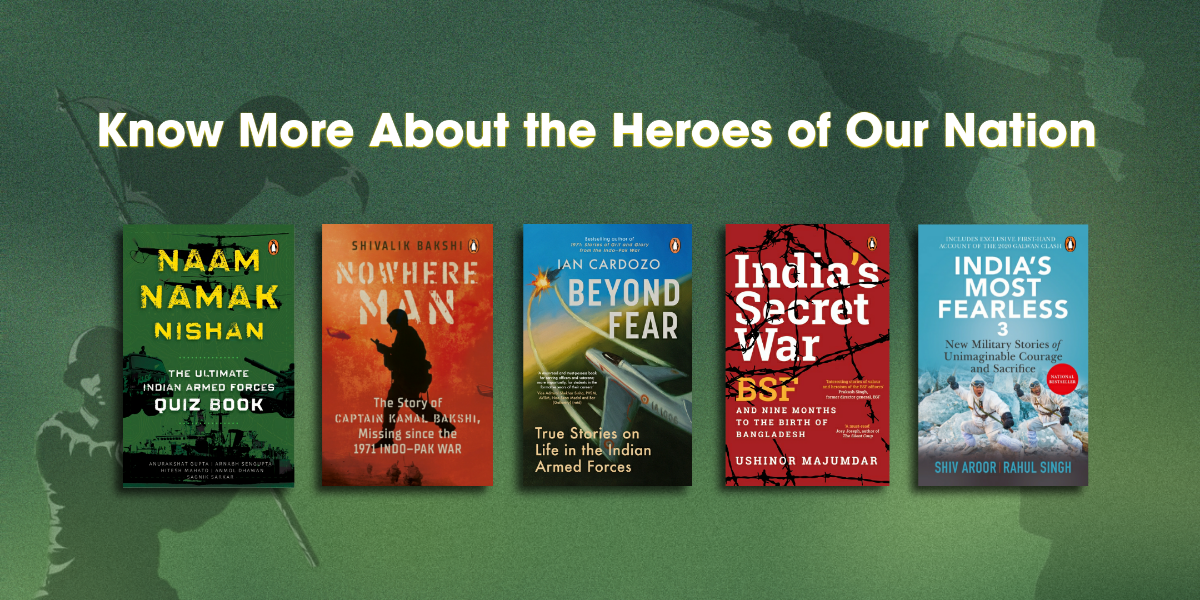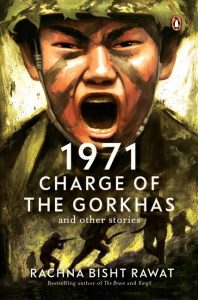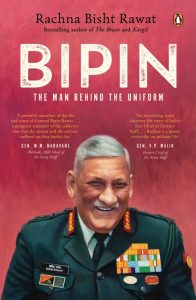Step into the world of heroism and sacrifice of the Indian Armed forces. From the untold stories of soldiers in the 1971 war to the daring anti-terror operations, these tales capture the courage of Indian forces. Join us in honoring the spirit of our brave defenders this Army Day.
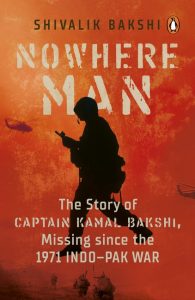
Capt. Kamal Bakshi fought in the 1971 Indo-Pak War and went missing after the Battle of Chhamb–the bloodiest battle of 1971. Although no one from his battalion had seen him get killed, no one had been able to locate his body. And so, the military declared him ‘Missing, Believed Killed’–the ambiguous status assigned to soldiers when their death cannot be confirmed.
However, six years after the war, the Indian government changed its mind. The Ministry of External Affairs announced in Parliament that Indian intelligence agencies have reason to believe that Pakistan had not been truthful when it handed over the list of Indian POWs in its custody. It went on to state the names of at least forty Indian soldiers still believed to be in Pakistani custody and one of the names was Kamal Bakshi’s.
This book has been written by his nephew Shivalik Bakshi. It is his story, recreated from his letters, diaries, recollections of those who crossed paths with him and published accounts of the Battle of Chhamb.
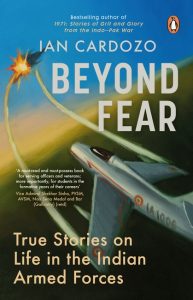
The stories featured in Major General Ian Cardozo’s book Beyond Fear, inform the reader that fear is not exceptional. It is common to all human beings. The question is: Do we face fear or run away from it? Through these thirteen stories, he reveals to the reader how military personnel conquer fear. He calls it ‘biting the bullet’.

India’s Most Fearless 3 features ten true stories of extraordinary courage and fearlessness, providing glimpses of the heroism Indian soldiers have displayed in unthinkably hostile conditions and under grave provocation.

Anecdotal, candid and evocative, Kitne Ghazi Aaye, Kitne Ghazi Gaye brings to light the true stories from Lt Gen. K.J.S ‘Tiny’ Dhillon (Retd)’s life. It focuses on the personal, professional and, most importantly, family life of a soldier in the Army, and will not only provide an insight into the trials and tribulations he faced but will also inspire a wide spectrum of readers, especially young defence aspirants.
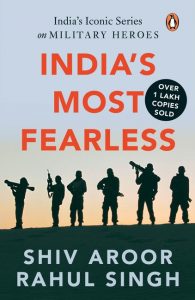
The men who hunted down terrorists in a magical
Kashmir forest where day turned to night. The Army major who led the legendary September 2016 surgical strikes on terror launch pads across the LoC. A Navy officer who sailed into a treacherous port to rescue hundreds from an exploding war. A bleeding Air Force pilot who found himself flying a jet that had become a screaming fireball. An e xclusive first-hand account of the 2020 Galwan clash.
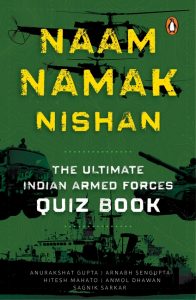
Do you know why the Indian Navy counts ‘One, Two, Six’ instead of ‘One, Two, Three’ while doing group tasks?
Or that the Intelligence Bureau was set up in response to an assassination?
Or that a Frenchman who had served three nations before turning thirty eventually rose to become the most powerful general of the Marathas?
Or that an army man gave his name to the highest mountain without ever having set foot on it?
Find out the answers to these and more as a team of quizzer-doctors from the Armed Forces Medical College (AFMC) Pune takes you on a journey across 250 questions, exploring trivia that connects the Indian Armed Forces to topics ranging from mythology, history and art to geography, fashion and sport.
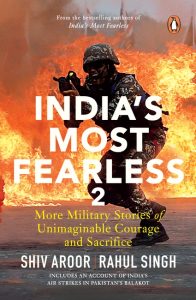
Untold accounts of the biggest recent anti-terror operations
First-hand reports of the most riveting anti-terror encounters in the wake of the 2016 surgical strikes, the men who hunted terrorists in a magical Kashmir forest where day turns to night, a pair of young Navy men who gave their all to save their entire submarine crew, the Air Force commando who wouldn’t sleep until he had avenged his buddies, the tax babu who found his soul in a terrifying Special Forces assault on Pakistani terrorists, and many more.
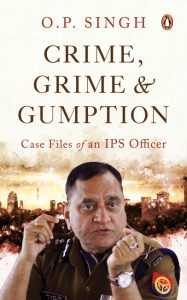
From the dusty plains of Gaya, Bihar, to the swampy and terror-infested wetlands of Lakhimpur Kheri, Uttar Pradesh, Crime, Grime and Gumption is an honest and hard-hitting account of law enforcement and governance in the Hindi belt of India. As the ‘policewallah’ gives you a peek into the world of the khaki in this memoir, you will be left thirsting for more.
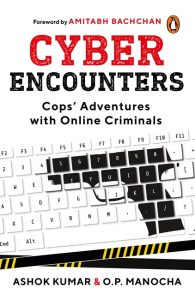
Cyber Encounters delves deep into this nebulous cyberspace, to bring twelve fascinating accounts of cybercrime. Ashok Kumar, DGP, Uttarakhand Police and a veteran in the systematic fight against cybercrime in the state, and OP Manocha, an ex-DRDO scientist, unfold a specific type of cybercrime in each tale, based on a true story. Packed with information on the crime, its investigation and the apprehending of the criminals, this illuminating insider account is a must-read.

The son of a modest famer, Nazir tried his hand at carpet weaving, a traditional Kashmiri craft, as a young boy. Teenagers those days heard strident voices, fiery speeches, and more than occasional gunfire. Some were scared, some swayed. Nazir strayed on the wrong side as a teenager, starting with running errands for terrorist groups to more. Fortunately for him, Ikhwan, a rehabilitation programme that allowed young Kashmiri men to convert from militancy and work with the Indian Army, was started just then.
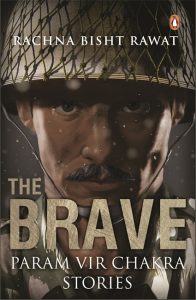
21 riveting stories from the battlefield about how India’s highest military honour was won
The Brave takes you to the hearts and minds of India’s bravest soldiers, all of whom won the Param Vir Chakra, India’s greatest military honour. With access to the Army, families and comrades-in-arms of the soldiers, Rachna Bisht Rawat paints the most vivid portrait of these men and their extraordinary deeds.
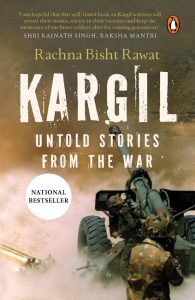
Kargil takes you into the treacherous mountains where some of Indian Army’s bloodiest battles were fought. Interviewing war survivors and martyrs’ families, Rachna Bisht Rawat tells stories of extraordinary human courage, of not just men in uniform but also those who loved them the most. With its gritty stories of incomparable bravery, Kargil is a tribute to the 527 young braves who gave up their lives for us-and the many who were ready to do it too.
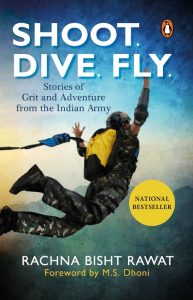
The book aims to introduce teenagers to the armed forces, unveiling both the perils-the rigours and the challenges-and the perks-the thrill and the adventure-of a career in uniform. Ballroom dancing, flying fighter planes, detonating bombs, skinning and eating snakes in times of dire need and everything else in between-there’s nothing our officers can’t do!

With access to classified records and through exhaustive interviews with surviving veterans, award-winning investigative reporter Ushinor Majumdar has crafted this first comprehensive historical account of the BSF’s role in the Bangladesh liberation war, which changed the course of South Asian history.








